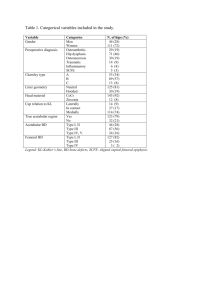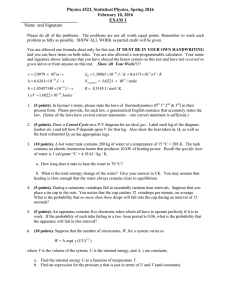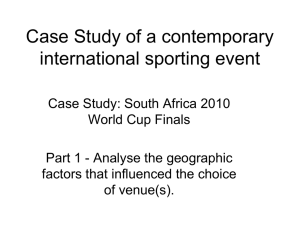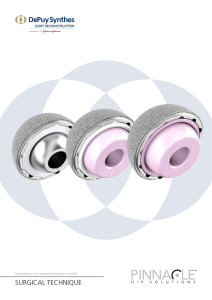Acetabular Cup Design and Orientation Affect Periacetabular Loading Distribution
advertisement
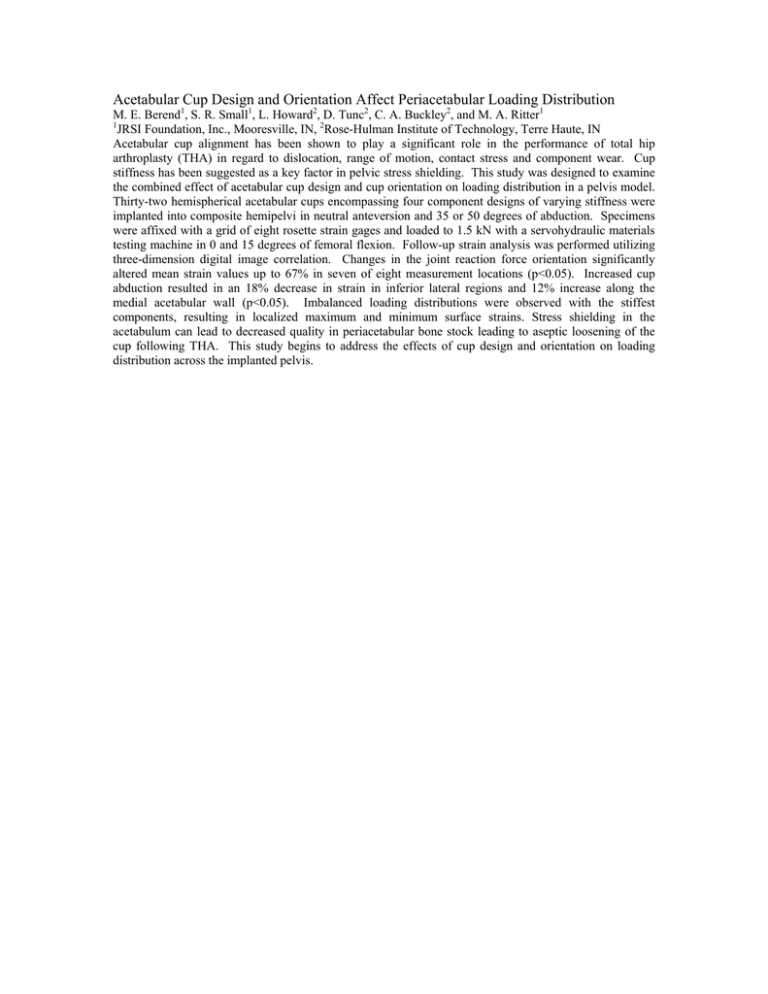
Acetabular Cup Design and Orientation Affect Periacetabular Loading Distribution M. E. Berend1, S. R. Small1, L. Howard2, D. Tunc2, C. A. Buckley2, and M. A. Ritter1 1 JRSI Foundation, Inc., Mooresville, IN, 2Rose-Hulman Institute of Technology, Terre Haute, IN Acetabular cup alignment has been shown to play a significant role in the performance of total hip arthroplasty (THA) in regard to dislocation, range of motion, contact stress and component wear. Cup stiffness has been suggested as a key factor in pelvic stress shielding. This study was designed to examine the combined effect of acetabular cup design and cup orientation on loading distribution in a pelvis model. Thirty-two hemispherical acetabular cups encompassing four component designs of varying stiffness were implanted into composite hemipelvi in neutral anteversion and 35 or 50 degrees of abduction. Specimens were affixed with a grid of eight rosette strain gages and loaded to 1.5 kN with a servohydraulic materials testing machine in 0 and 15 degrees of femoral flexion. Follow-up strain analysis was performed utilizing three-dimension digital image correlation. Changes in the joint reaction force orientation significantly altered mean strain values up to 67% in seven of eight measurement locations (p<0.05). Increased cup abduction resulted in an 18% decrease in strain in inferior lateral regions and 12% increase along the medial acetabular wall (p<0.05). Imbalanced loading distributions were observed with the stiffest components, resulting in localized maximum and minimum surface strains. Stress shielding in the acetabulum can lead to decreased quality in periacetabular bone stock leading to aseptic loosening of the cup following THA. This study begins to address the effects of cup design and orientation on loading distribution across the implanted pelvis.
